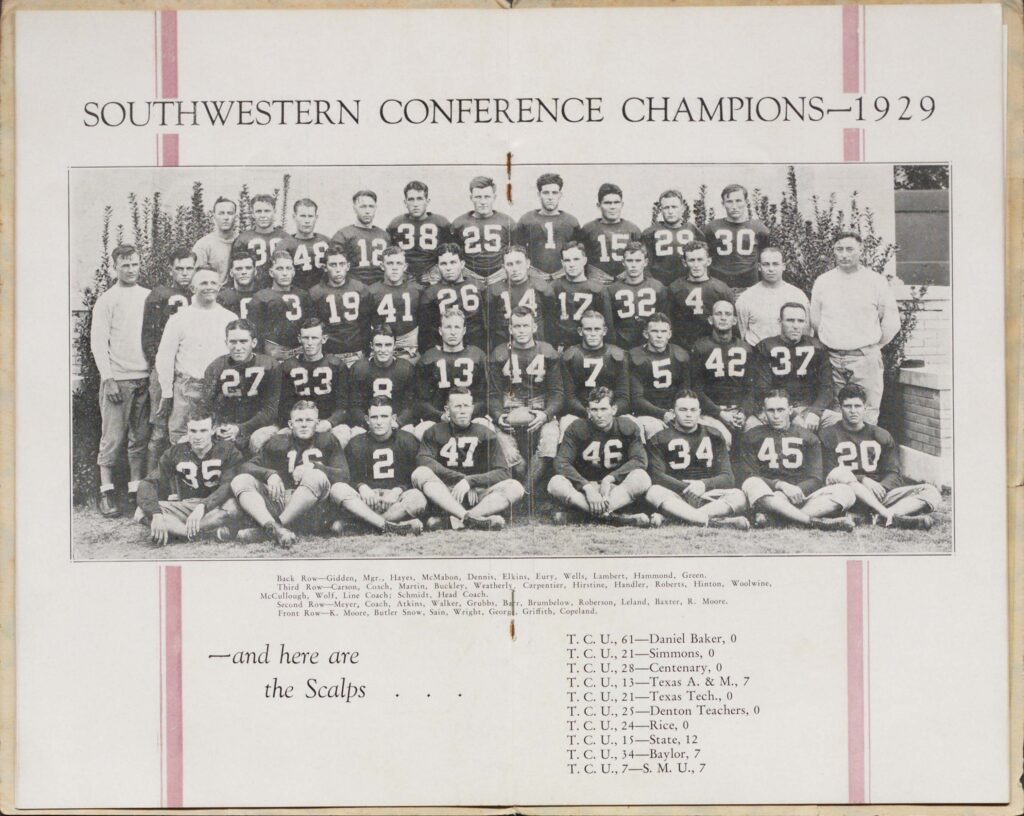This episode talks about many significant events before 1930 in the world of college football including early games that shaped the way college football was made and increased its popularity. We also go in-depth about the development of TCU’s football program and how it was able to transform from a small college in Waco to a contender in Fort Worth. The building of Amon G Carter Stadium was such a monumental change for TCU to show that they were invested in the athletic programs and wanted to grow in popularity as a whole.

The 1929 TCU Football Team
Note: The language in the photo above does not refelct the image or personal feelings of modern time. It is a product of its time and era.
Sources
Dean, Cameron; Downs, Benjamin; Seifried, Chad and Tuka, Patrick, “The Development of TCU Football and the Construction of TCU Stadium: Building Community and Establishing Legitimacy, 1896–1930,” Southwestern Historical Quarterly 123, no. 2 (October, 2019): 204-223.
“College Football History: Notable Firsts and Milestones.”, NCAA.com, 4 Aug. 2023,
“City to spend $4,00,000 on Number of Projects,” Fort Worth Star-Telegram, December 29, 1929.
“$350,000 Stadium is Setting for Dedication Game,” The Skiff, October 10, 1930.
“Nov. 6th, 1869, Princeton and Rutgers played in the first college football game!,” College Football Hall of Fame, Facebook.
“Texas Christian University Fight Song,” Hydra, Youtube.
“TCU Horned Frog Marching Band,” TCU, Youtube.
Our Expert
Dr. Benjamin Downs received his PhD from Louisiana State University in 2019. Downs focuses on sports facilities and utilizes modernization to better understand the construction and renovation trends related to multipurpose arenas. Downs is a Sports Historian and Assistant Professor of Sports Administration at Ball State University.

